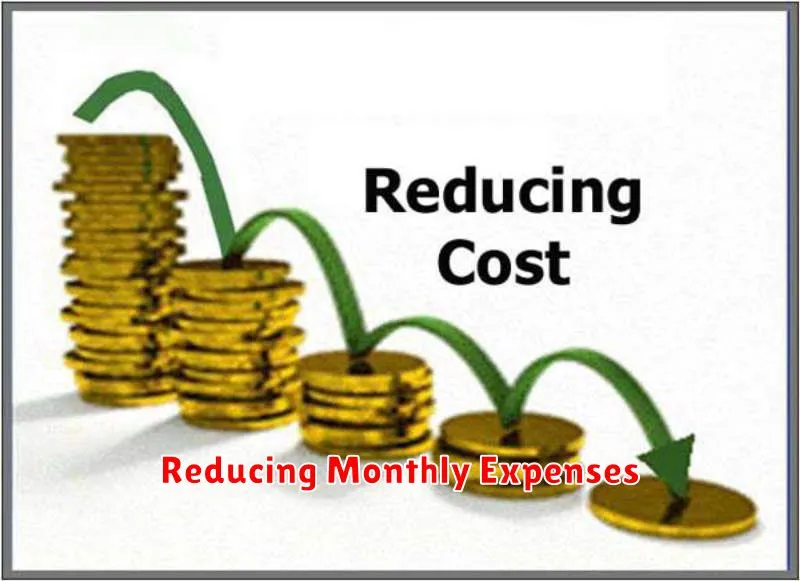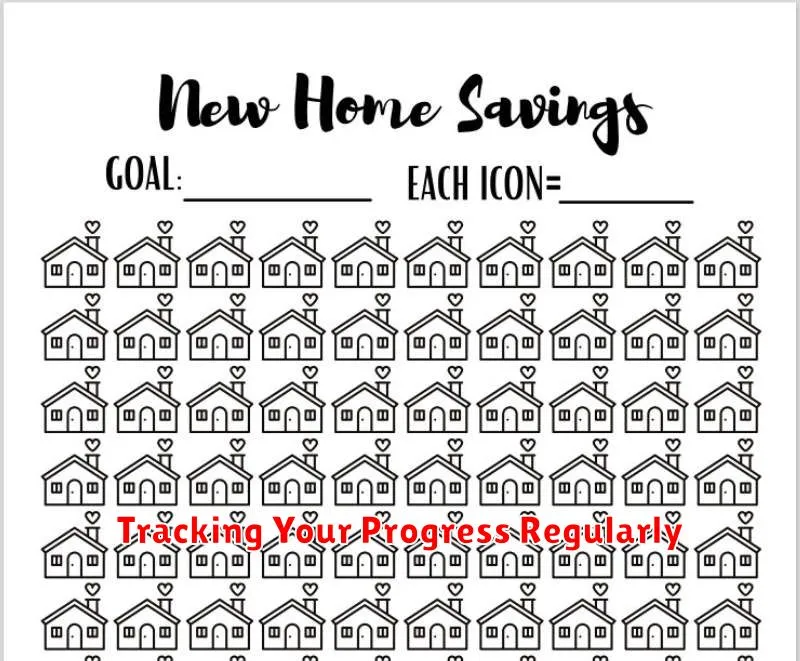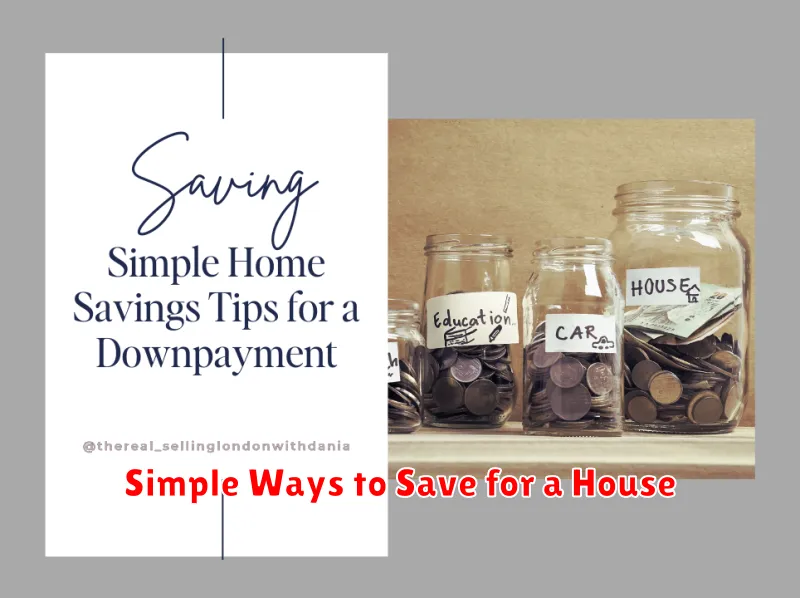Saving for a house can feel like a daunting task, but it’s a significant step towards achieving the dream of homeownership. This article explores simple ways to save for a house, offering practical tips and strategies to make the process more manageable. Whether you’re a first-time homebuyer or looking to upgrade, understanding how to effectively save for a down payment, closing costs, and other expenses is crucial. By implementing these simple saving strategies, you can build a solid financial foundation and move closer to owning your dream home.
From budgeting and cutting expenses to exploring various savings accounts and investment options, we’ll cover a range of accessible and effective ways to save for a house. Navigating the complex world of real estate finance can be overwhelming, but with a clear plan and consistent effort, you can successfully save for your future home. This guide will provide you with the tools and knowledge to simplify the process and make saving for a house a realistic and achievable goal.
Setting a Home Savings Goal
Setting a realistic home savings goal is the crucial first step in the home-buying process. Begin by determining the amount you need for a down payment. This typically ranges from 3% to 20% of the home’s purchase price, but a larger down payment can secure better loan terms and potentially eliminate private mortgage insurance (PMI). In addition to the down payment, factor in closing costs, which include fees for appraisals, loan origination, and title insurance. These can add up to another 2-5% of the purchase price. Finally, it’s wise to establish an emergency fund to cover unexpected expenses after moving in.
To calculate your savings goal, research the average home prices in your desired area. Online real estate portals and local real estate agents can provide valuable market data. Once you have an estimated purchase price, determine your target down payment percentage. Multiply the purchase price by the down payment percentage to calculate the required down payment amount. Add your estimated closing costs and desired emergency fund to arrive at your final savings goal.
Remember, this savings goal is a dynamic figure. Market conditions and personal circumstances can influence the final amount needed. Regularly reviewing and adjusting your goal ensures it remains aligned with your aspirations and the realities of the housing market.
Opening a Dedicated Savings Account
Opening a dedicated savings account is a crucial step towards achieving your financial goals. Whether you’re saving for a down payment on a house, a new car, or simply building an emergency fund, a dedicated account helps you separate these savings from your everyday spending. This separation makes it easier to track your progress and resist the temptation to dip into your savings for non-essential purchases. It also allows you to maximize your savings potential by taking advantage of interest-bearing accounts designed specifically for saving.
The process of opening a dedicated savings account is typically straightforward. Most banks and credit unions offer a variety of savings accounts with varying interest rates, fees, and minimum balance requirements. You can often open an account online, in person at a branch, or even over the phone. Be sure to compare different account options and choose one that aligns with your specific savings goals and financial situation. Consider factors such as the interest rate offered, any monthly maintenance fees, and the accessibility of your funds.
Once you’ve opened your dedicated savings account, it’s important to establish a regular savings habit. Setting up automatic transfers from your checking account to your savings account can be a highly effective way to ensure consistent contributions. Even small, regular deposits can accumulate significantly over time thanks to the power of compound interest. Remember to review your account statements periodically to monitor your progress and adjust your savings strategy as needed.
Reducing Monthly Expenses

Reducing monthly expenses is crucial for achieving financial stability and reaching long-term financial goals. By carefully examining spending habits and making informed choices, individuals can free up significant funds for saving, investing, or paying down debt. This process requires a proactive approach and a willingness to adjust lifestyle choices where necessary.
One effective method involves creating a budget. Tracking income and expenses provides a clear picture of where money is being spent. This awareness allows for the identification of areas where expenses can be trimmed, such as dining out less frequently, canceling unused subscriptions, or finding more affordable alternatives for utilities and insurance. Prioritizing needs over wants is also essential in making informed spending decisions.
Furthermore, consider ways to increase income. Exploring opportunities like a part-time job, freelance work, or selling unused items can supplement existing income and accelerate progress toward financial goals. Even small increases in income can make a substantial difference when combined with reduced expenses.
Avoiding Big Purchases During a Saving Period
When actively saving towards a financial goal, it’s crucial to avoid making large, unnecessary purchases. These purchases can significantly derail your progress and extend the time it takes to reach your objective. Consider the impact on your savings plan before committing to any significant expenditure. Ask yourself if the purchase is a need or a want. Prioritize needs and postpone wants until after you’ve achieved your savings goal. This disciplined approach will help you stay focused and maintain momentum.
Creating and sticking to a budget is essential for managing spending during a saving period. A budget provides a clear picture of your income and expenses, enabling you to identify areas where you can cut back and redirect funds towards your savings. Carefully track your spending and identify potential areas for reduction, such as dining out, entertainment, or subscription services. Even small changes can accumulate into significant savings over time. By diligently following a budget, you can ensure that your spending aligns with your savings goals.
If you find yourself tempted by a large purchase, consider implementing a waiting period. This allows you time to carefully evaluate the necessity of the purchase and its potential impact on your savings plan. During this waiting period, research alternative options or less expensive substitutes. You may find that your desire for the item diminishes over time, or that a more affordable option satisfies your needs. This strategic pause can prevent impulsive spending and protect your progress towards your financial objective.
Tracking Your Progress Regularly

Tracking your progress is crucial for achieving your goals, whether they’re personal or professional. By consistently monitoring your advancements, you gain valuable insights into what’s working, what’s not, and where adjustments need to be made. This allows you to stay motivated, celebrate small wins, and maintain momentum towards your desired outcome.
There are various methods for tracking progress. You can use a simple notebook, a spreadsheet, dedicated apps, or project management software. Choose the method that best suits your needs and preferences. The key is to establish a system that you can easily maintain and that provides you with the necessary data to evaluate your performance. Remember to set realistic milestones and track your progress against them.
Regularly reviewing your progress also helps identify potential roadblocks early on. This proactive approach empowers you to address challenges promptly and adjust your strategy as needed, ultimately increasing your chances of success. By understanding your strengths and weaknesses through progress tracking, you can refine your approach and optimize your efforts for optimal results.
Government Assistance and First-Time Buyer Grants
Purchasing a home can be a daunting task, especially for first-time buyers. Fortunately, various government programs and grants exist to help make homeownership more attainable. These programs can provide assistance with down payments, closing costs, and even ongoing mortgage payments. It’s crucial to research eligibility requirements, as they often vary based on income, location, and the type of property being purchased. Understanding the specifics of these programs can significantly impact your ability to afford your first home.
Common types of assistance include grants, which don’t require repayment, and loans, which do. Grants are often targeted towards specific groups, such as low-income families, veterans, or individuals purchasing homes in designated revitalization areas. Loans, on the other hand, may offer more flexible terms, such as lower interest rates or reduced down payment requirements, compared to conventional mortgages. Potential homebuyers should explore both options to determine which best suits their individual financial situation.
Begin your search for government assistance by contacting your state’s housing agency or a HUD-approved housing counseling agency. They can provide personalized guidance and connect you with relevant programs in your area. Additionally, consider exploring options offered by the Federal Housing Administration (FHA) and the Department of Veterans Affairs (VA), if applicable. Remember, securing pre-approval for a mortgage is a vital step before beginning your house hunt, and understanding available assistance programs can make the pre-approval process even smoother.
How Long It Typically Takes to Save for a Home
Saving for a home can take anywhere from a few months to several years, depending on individual circumstances. The most significant factors include income, location, savings rate, and the desired home price. Someone with a higher income in a less expensive area will likely save much faster than someone with a lower income in a competitive housing market. Additionally, the size of the down payment significantly impacts the timeline; a larger down payment requires more savings but can shorten the overall mortgage term.
A common goal is to save for a 20% down payment to avoid private mortgage insurance (PMI). However, there are many loan options available with lower down payment requirements, sometimes as low as 3-5%. While these options allow buyers to enter the market sooner, they often come with higher interest rates and monthly payments. Carefully evaluating your budget and financial goals is crucial to determining the right approach.
Taking proactive steps can accelerate the saving process. Creating a realistic budget, automating savings deposits, and exploring down payment assistance programs can all make a difference. Reducing current expenses, even temporarily, can also significantly contribute to reaching your savings goal faster.

